Last year, 23 million suitcases were
mishandled or lost by airlines and airports. Here we review smart
luggage and tracking devices designed to solve the problem.
ANTLER AIRSTREAM 2
British luggage company Antler will soon unveil its Airstream 2 case, which comes with a unique ID label. Owners register their case on okoban.com,
along with their contact information, so if the bag goes missing,
whoever finds it can send an alert to them through the website with its
whereabouts.
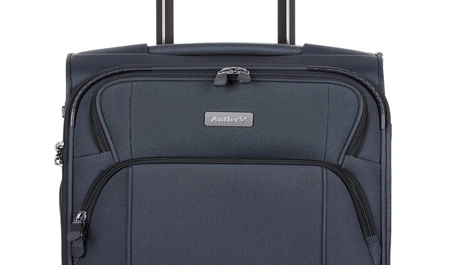
USEFUL? Okoban says: “Your
chances of being reunited with lost property are significantly improved”
when using its system. It’s hard to tell if it would be any more
effective than the airline baggage handling operations, which have their
own procedures for getting your case back to you. If a stranger finds
it in an airport concourse, for example, that is a different matter.
Okoban has more lost and found offices in more than 2,200 airports.
Source: Businesstraveller
The suitcase is not high-tech in itself, but the label is a handy add-on that may come as standard on all cases in the future. Okoban also collaborates with Cabin Zero luggage, but the easiest option is to simply buy its ready-made tags and stickers for your valuables.
The suitcase is not high-tech in itself, but the label is a handy add-on that may come as standard on all cases in the future. Okoban also collaborates with Cabin Zero luggage, but the easiest option is to simply buy its ready-made tags and stickers for your valuables.
BLUESMART
One of the better examples of smart lugagge on the market, the Bluesmart
is not only fitted with a global SIM card so you can track it from your
smartphone visa GPS, but an in-built battery for charging devices, a
digital lock and scale. The crowdfunded Bluesmart One is out now
(US$449), while the Black Edition is coming soon.
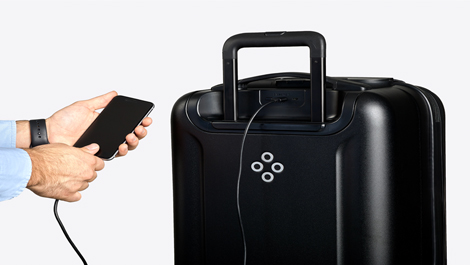
USEFUL? Given the Bluesmart One is hand-baggage
size, the need for tracking seems less compelling, and built-in
batteries will likely cause problems at security. A review of the case
on thenextweb.com reported an
airport security officer as saying: “As these things become more
popular, I’m sure we’ll get training on how to better look for them… But
I would suggest to the company that any kind of wiring should be
removable so we can properly scan for potential threats.”
DELSEY PLUGGAGE
Set to launch next year, Delsey has offered a preview of its new smart Pluggage case, which has fingerprint recognition and tracking technology powered by Lug Loc luggage locator (also used in Samsonite's GeoTrakR range). Business Traveller’s Marisa Cannon wrote:
“Passengers will be able to download the Pluggage app, which will
provide access to flight information and notifications of any changes.
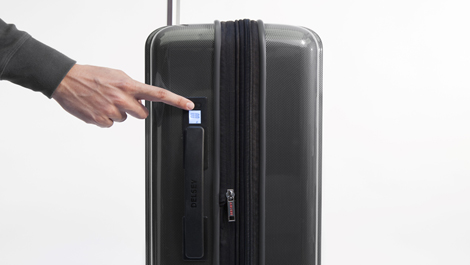
“The app will be able to measure the weight
of a case, detect when it has been loaded on board, and when it is on
the baggage carousel. Passengers will also receive a notification if
their bag has been opened, or if it is moved more than five feet away
from them. Inside, there will be a lighting system, speaker and
phone-charging facility.”
USEFUL? This sounds like an all-round smart suitcase with built-in tracking, monitoring and security features. An exciting proposition.
RIMOWA ELECTRONIC TAG
Rimowa
has created an electronic tag, whereby travellers can check-in their
bag via smartphone app and then drop it off at the airport with no need
to deal with staff or print out a sticker. The technology is built into
“select” Rimowa suitcases, and sees paper tags replaced with “a digital
data module to which the airline’s luggage data is transmitted”. At the
moment, Lufthansa is the only partner airline that has started allowing
passengers to use it, while United is in testing.
USEFUL? It’s certainly nifty
but won’t stop your case being lost. It will give travellers a pleasing
sense of control, though, at least with regard to the check-in process.
If you’re concerned your tag will disappear when the battery runs out,
don’t worry, that’s not likely. Once the tag is displayed it stops
relying on power.
SAMSONITE TRACK & GO
Samsonite
unveiled new Track & Go technology in April that will be built into
branded suitcases from the end of the year. Our online editor Mark Caswell wrote:
“The Bluetooth beacon technology uses ‘Eddystone Ephemeral
Identifiers’, an open privacy/security protocol developed by Google, and
will work in conjunction with the Travlr by Samsonite app, allowing
users to check the location of their suitcase within a 70 metre radius.
“Should the suitcase go missing the traveller
can flag it as lost, which will then prompt the app to use its database
of users to help locate the baggage – any app user passing within 70
metres of the suitcase will trigger a location notification to be sent
out to the suitcase’s owner.”
USEFUL? The success of the
technology will depend on the size of the community using the Travlr
app. Samsonite says: “An important next step will be collaborating with
airports and baggage handling companies to grow the network of fixed
Bluetooth beacons in the vicinity of important travel hubs.
TILE
This tiny Bluetooth tracking device recently launched in the UK – so far, US company Tile
has sold more than 4.5 million of them worldwide. It can be attached to
your keys or placed in your wallet or rucksack. To locate something
nearby, you can actually ring it through the mobile app (provided you’re
within the 100ft Bluetooth range), or open the map to see where you
last had it. You can also press it to call your phone.
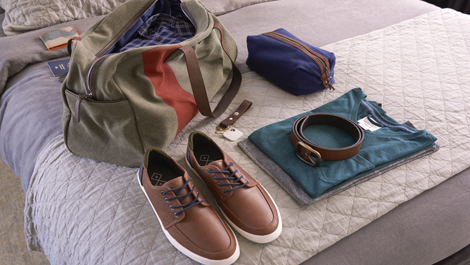
Crowd-sourced tracking enables you to expand
the search area using other people using the Tile app. Tile says: “This
feature is 100 per cent private, so no one knows you're looking for a
lost item but you.”
USEFUL? Being small and
cheap (US$25) this is a handy, low-cost way to keep track of your
belongings, especially if you are forgetful. However, it won’t help if
your suitcase is in Hong Kong and you are in London.
TRACKR BRAVO
TrackR’s coin-size tracking device works in a
similar way to Tile. The product, which received US$1 million of
crowdfunding, enables you to see your valuables on a map. You can also
call them on your cell phone or use the gadget itself to call your
phone. A distance indicator will show how close you are to your lost
item (up to 100ft), while again crowd GPS helps you track worldwide.
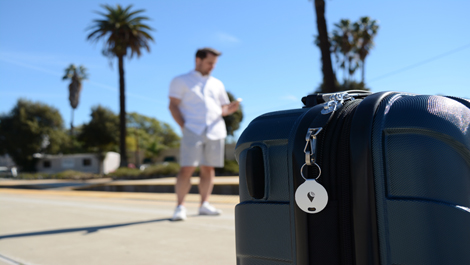
USEFUL? The Trackr Bravo
is a little more expensive than the Tile (US$29.99) but works in a
similar way. It’s available in four colours (silver, blue, black and
rose). Again it’s not really designed for checking luggage on to a
plane, and crowd-tracking relies on a certain volume of users to be
effective.
TUMI GLOBAL LOCATER
Last September, Tumi announced a partnership with US telecommunications giant AT&T and tech company LugTrack
to create a new wireless tracking device called Tumi Global Locater.
The idea behind the sleek palm-size device, which you pack between your
clothes and pair with a smartphone app, is to provide travellers with
real-time data on the whereabouts of their suitcases, through GPS, WIFI,
Bluetooth and GSM.
It’s also compliant with US Federal Aviation
Administration regulations, shutting down automatically during flight,
and coming back on after landing. You can set the device to
“geotracking”, “plane” and “shipping” modes to get a reports
whereabouts, while “hotel” mode will send you a push notification if
your case has been moved from its “base” where you are staying.
USEFUL? In theory, yes, but
Tumi says: “Unfortunately the Global Locator is still not available and
we don't yet have a release date. However, each piece of Tumi luggage
comes with an affixed metal plate bearing a unique barcode. This barcode
is stored in the Tumi Tracer database, which can be cross-referenced
with the owner's name, address and telephone number.
“Once the bag has been reported found – via
the freephone number printed on the plate – Tumi will notify the owner
of its whereabouts and provide information on how the item can most
easily be recovered. All customers have to do is register their
purchases at point of sale or online to be enrolled in the programme.”
By Jenny Southan